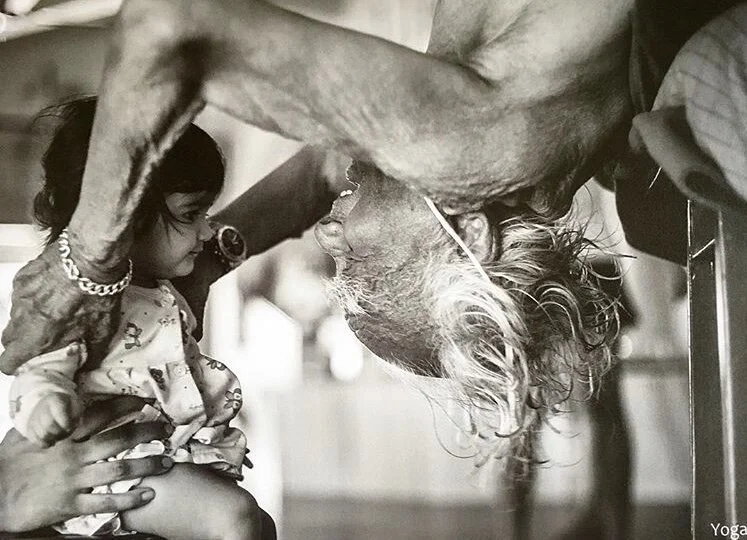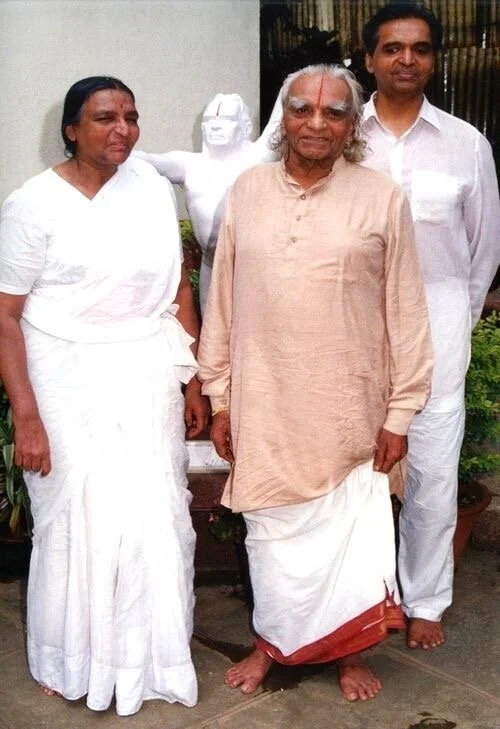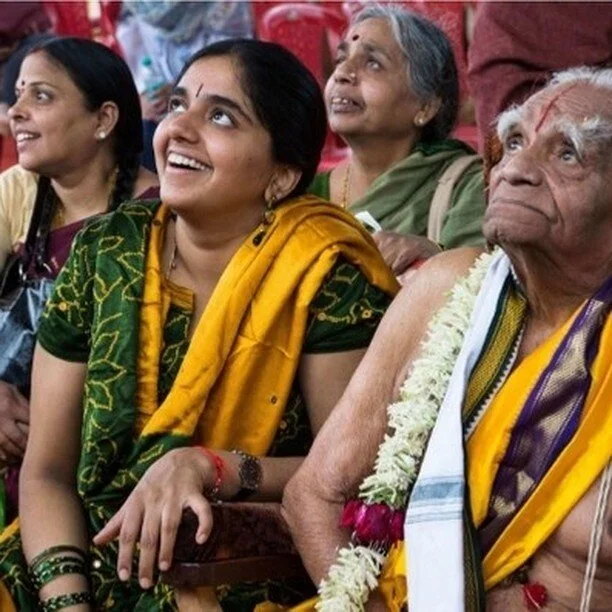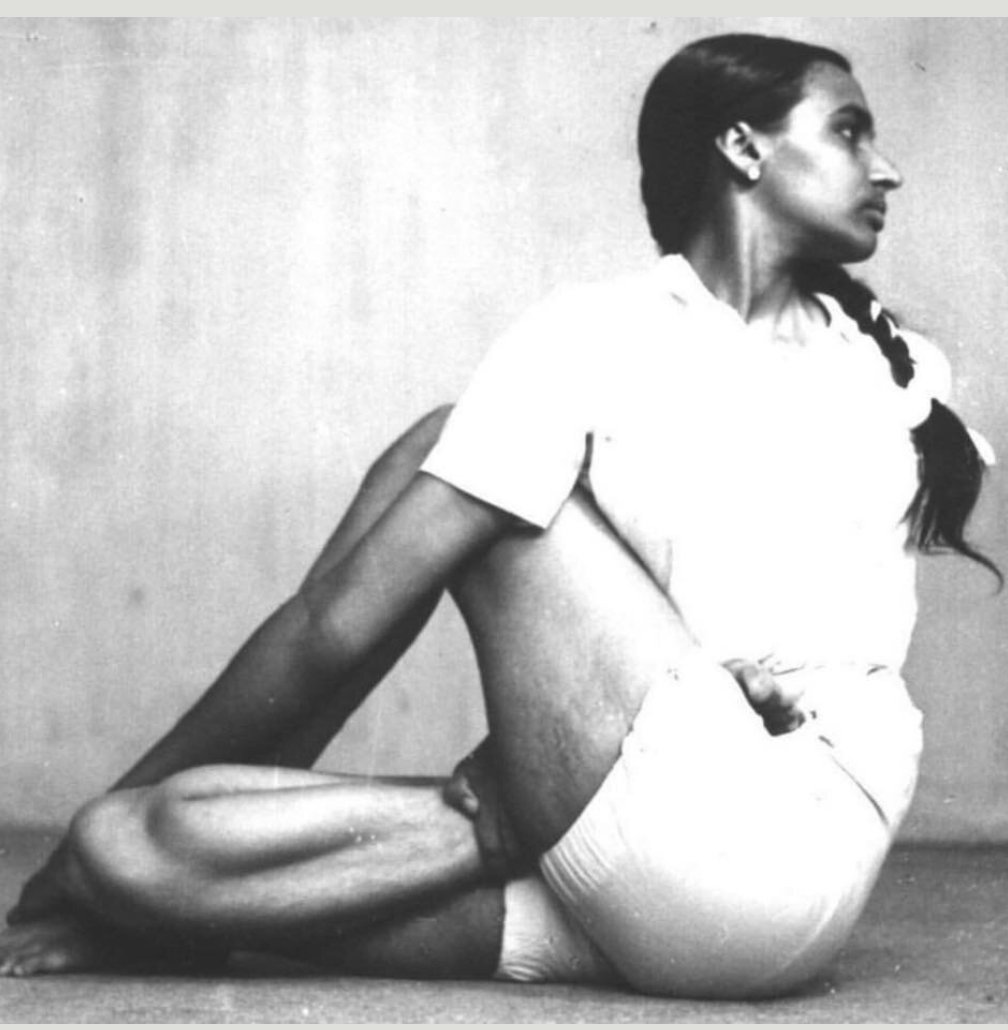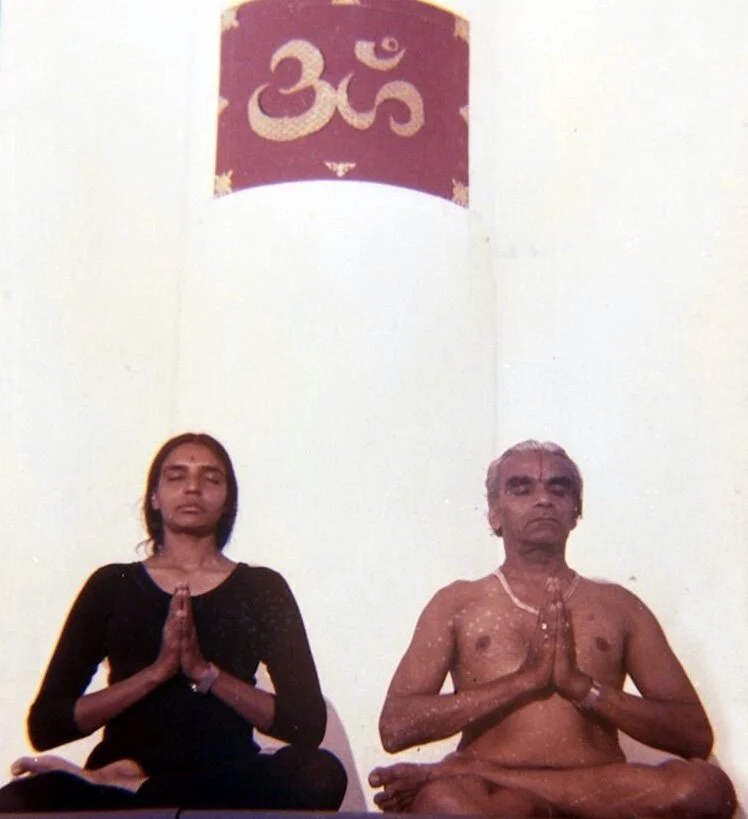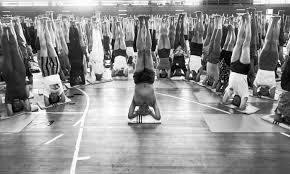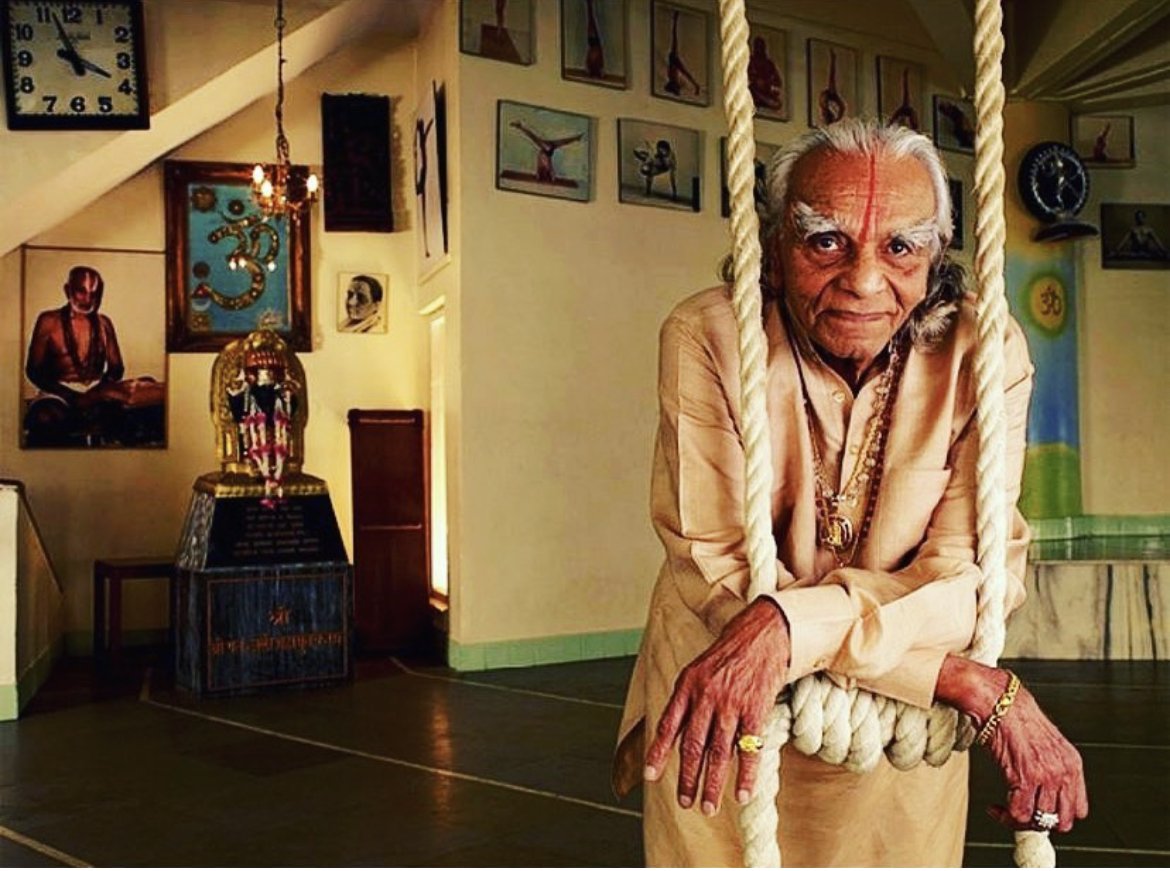
ABOUT IYENGAR YOGA
The term Iyengar Yoga was created by the dedicated students of Yogacharya (a revered term meaning master of yoga) B.K.S. Iyengar to describe the method of practice, teaching, and system of yoga developed by Mr. Iyengar across his 70 years of teaching. It is a form of yoga with an emphasis on systematic intelligence, precision, alignment, healing, vitality, and progressive penetration inwards towards the soul. Mr. Iyengar devoted his life to the evolution of his approach to yoga, which is based on the traditional eight limbs of yoga taught over 2,500 years ago by the sage, Patanjali. Mr. Iyengar believed that yoga is not only a physical discipline but an art, a science, and a philosophy. Iyengar Yoga is known for its rigor, clarity of instruction, and medically proven application of therapeutics. B.K.S Iyengar revolutionized the subject of yoga around the world. He is largely responsible for bringing yoga to the West and invented the yoga props that are commonly used today.
“Yoga teaches us to cure what need not be endured and endure what cannot be cured.”
Iyengar Yoga is differentiated from other methods by a worldwide, standardized system of instruction, application of therapeutics, creative adaptive use of props, and highly skilled teachers. In an age where capitalism has taken over the world of yoga with weekend-long teacher trainings and certifications online, we, Certified Iyengar YogaTeachers, undergo rigorous training—a minimum three-year training and apprenticeship with prior years of practice required. Our mentors must recommend us to apply to take the teaching exams before becoming certified. Continuing mentorship is required, and multiple assessments and teaching exams are necessary to advance teaching certification levels. Only CIYTs are permitted to describe their method of instruction as Iyengar Yoga. CIYTs are trained to provide clear demonstrations of each posture and are skilled in using simple props to maximize the opening and awareness of the body for each student at every level. A deep-seated understanding and experience of the asanas allow instructors to teach the group in front of them. Classes are sequenced to promote health and skill in the body and stability in the mind. The total approach ensures that students progress gradually in a safe step by step approach.
The New York Times points out that because Iyengar yoga “focuses meticulously on proper alignment” and its teachers undergo “rigorous training,” it allows instructors to cater to students’ individual needs and to minimize the risk of injury.”
WebMD states, “Analytical in its approach with a constant attention to detail, Iyengar yoga is great for learning the subtleties of correct alignment in each pose. The use of props — belts, blocks, and pillow-like bolsters — help beginners get into poses with correct alignment, even when they’re new to the poses, injured, or simply stiff.”
“Yoga allows you to rediscover a sense of wholeness in your life, where you do not feel like you are constantly trying to fit broken pieces together.”
About B.K.S. Iyengar & The Iyengar Family
B.K.S. Iyengar (December 14, 1918- August 20, 2014) was born in Bellur, India. As a child, B.K.S. Iyengar struggled with malaria, typhoid fever, tuberculosis, and general malnutrition. With hopes of improving his health, he began studying yoga beginning at the age of 15 with his brother-in-law and yoga guru, T. Krishnamacharya. Studying with Krishnamacharya was a turning point in Mr. Iyengar’s life. His studies not only improved his health, but as he says, “determined what I have become today.” Though B.K.S. held his Guru Krishnamacharya with high regard, and even turned to him for advice, their relationship was troubled. Krishnamacharya believed the sick, stiff Iyengar would not be a successful Yogi. It wasn’t until Krishnamacharya’s favorite student left, that Iyengar’s training truly started. Krishnamacharya began teaching B.K.S. a series of difficult poses, and sometimes demanding that B.K.S. not eat until he mastered each pose. B.K.S spoke of his reaction to this rigorous training in Light on Life, “Perhaps that stimulated some stubborn aspect of my nature… I am ardent and passionate, and maybe I needed to show the world that I was not worthless. But far more than that, I wanted to find out who I was.”
In 1937 Krishnamacharya sent 18-year-old B.K.S. to Pune to spread the teaching of yoga. While B.K.S Iyengar entered into a type of apprenticeship with T. Krishnamacharya, Mr. Iyengar took on the study of the asana primarily on his own. He studied and practiced intensely with fervor. He developed an encyclopedic knowledge of asana and in the process systemized over 200 classical yoga poses and pranayama. He traveled extensively, demonstrated, and taught, unveiling to the world the profound ways to practice yoga asana, pranayama, and philosophy. B.K.S. Iyengar was innovative and radical. He pioneered the therapeutic application of yoga for the treatment of many medical, physical, and emotional conditions. His revolutionary use of props enabled students of all ages and ability to work to their fullest potential and experience the benefits of yoga. He truly believed yoga should be accessible for everyone and lived that belief fully. He wrote many wonderful books, many of which are authoritative modern yoga texts and has a large, closely connected family. His children and grandchildren, Geeta Iyengar (daughter), Prashant Iyengar (son), and Abhijata Iyengar (granddaughter), became ardent practitioners and profound teachers of yoga in their own right. They have dedicated their lives to continuing the lineage and continue to deepen, strengthen, and evolve his teachings.
Geeta Iyengar was a deeply devoted, powerful, and highly skilled practitioner and teacher of Iyengar Yoga. She pioneered yoga for women’s health including the development of specialized yoga for menstruation, all stages of pregnancy, and uterine health conditions. She also spearheaded the organization and training of teachers in the Iyengar Method. Her profound teachings live on in the many books she authored and the archives of her practice sequences and recorded classes. She passed away in December 2018, just days after teaching a ten-day intensive attended by thousands of teachers and practitioners honoring Guruji’s 100th birthday.
Prashant Iyengar continues to offer his brilliant teachings on yoga and yoga philosophy. His teachings hold a nuanced depth of knowledge and exploration that is unparalleled.
Abhijata Iyengar, lovingly called Abhi, studied with her grandfather intensely over the last two decades of his life. She possesses his fire and courage as she carries the torch of the lineage into the next generations. She teaches worldwide offering classes and lectures to the global community, in addition to teaching at RIMYI in Pune, India. Her wisdom and attunement to her students and the subject is incredible and we, the Iyengar community, are so grateful to benefit from her teachings.
